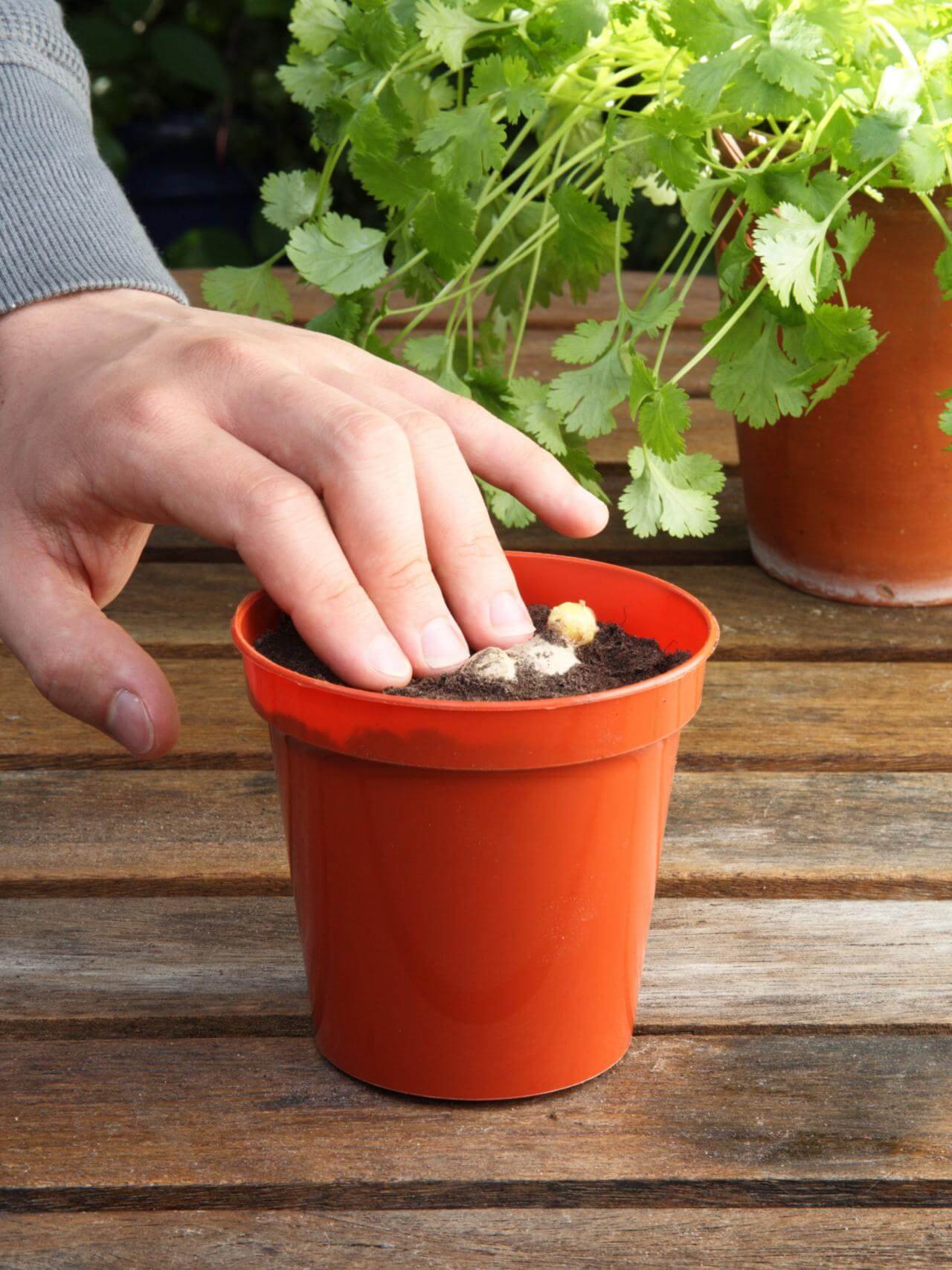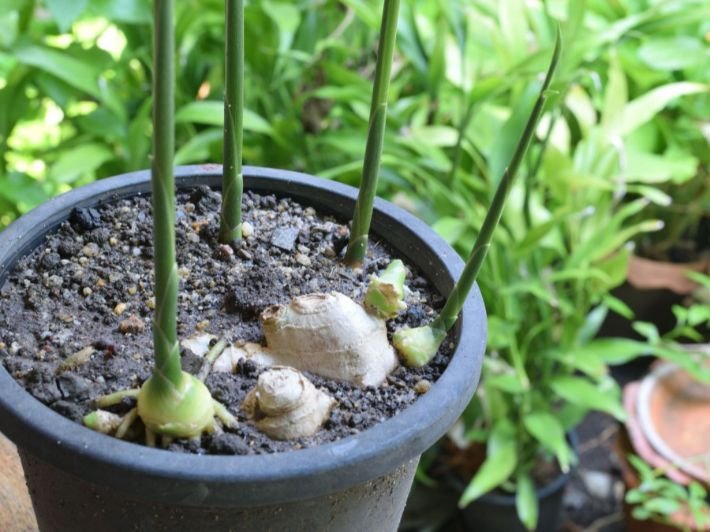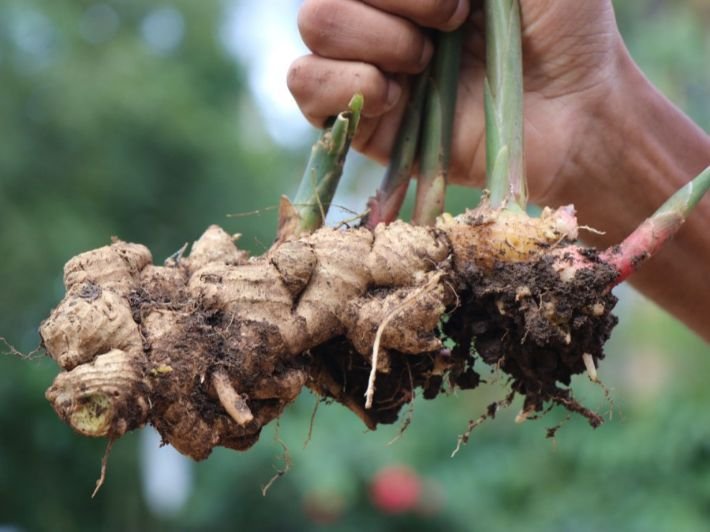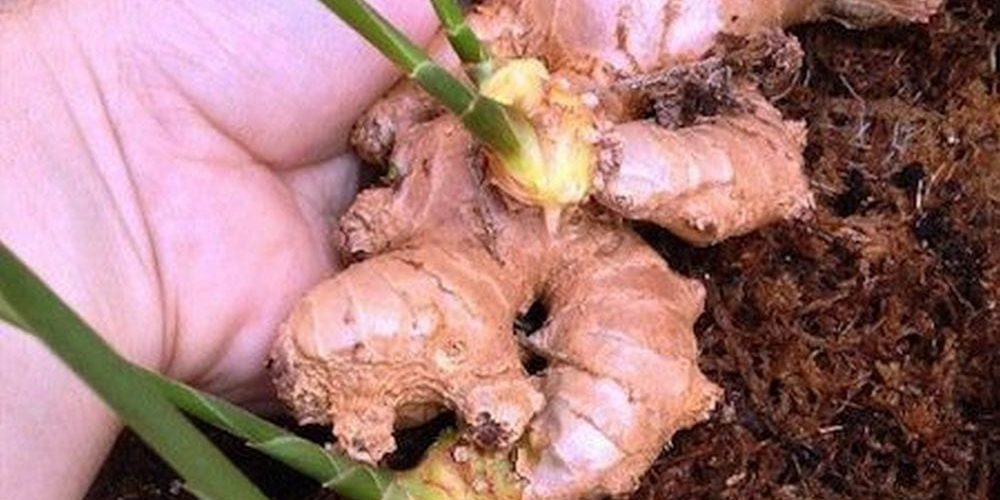Table of contents of the article
ToggleGinger is a popular spice with many health benefits and distinctive flavour. In this article on your website, World of Plants, we explained how to grow ginger, how to harvest it, and care for it, and we also explained the most important diseases that affect it.
How to grow ginger
Choosing the variety from the varieties of ginger that can be grown are the following: The Cantonese variety (in English: Canton Group): It is grown in the regions of Asia and Hawaii, and is distinguished by the large size of its rhizome and its pale yellow color, which makes it suitable for export and sale as a fresh vegetable.
The Fijian variety: It is grown in China, Australia, and the Fiji Islands, and is distinguished by its medium size, fragrant citrus-like aroma, and white or pink color.
Choosing land for growing ginger

Preparing the land for growing ginger
The land is prepared for planting ginger by plowing it, and making beds 15 cm high and one meter wide. Their length can change depending on the area of land in which ginger is to be grown, so that each bed is separated by 50 cm, or a distance. 40 cm if the crop is irrigated. Beds with high humidity that are likely to cause pests or diseases to the crop must be insolated by covering them with polyethylene sheets, then exposing them to sunlight for 20 to 30 days, after which the sheets are removed. And keep it for use at another time.
Agriculture: It is preferable to grow ginger in areas whose temperature ranges between 19 to 29 degrees Celsius. Because low temperatures put the ginger plant into a dormant phase, but the ginger plant can tolerate temperatures ranging from 13 to 35 degrees Celsius.

Ginger rhizome seeds are planted and distributed at a rate that varies according to the type of land and the method of cultivation used. Rhizome seeds are small parts of large rhizomes that contain one or more buds. Their length ranges from 2.5 cm to 5 cm, and their weight ranges from 20 to 25 grams.
Ginger plant care
The ginger plant grows horizontally, but the soil can be piled around the ginger stems to force it to grow vertically. This process is done 3 to 5 times during the growing season, and the exposed rhizomes must be covered with soil. In order to obtain a greater yield from the ginger crop, weeds must be removed. Turn it around during the first 4 to 6 weeks. Water the ginger at intervals of 4 to 10 days or as needed. Stagnant water must also be drained.
Harvesting ginger plant

Ginger is harvested after the leaves and stems dry, and it is extracted by digging. As for commercial quantities, it is extracted using a rod mounted on a tractor. Ginger must be treated after harvesting for a period of 3 to 5 days to prevent the appearance of mold on the rhizomes. There are two types of ginger available in the markets, which are as follows: :
- Young ginger: It is available in Asian markets, and it does not require peeling.
- Ripe ginger: It is widely available in the markets, and it also has a hard peel that must be removed when using it.
It is noteworthy that fresh, unpeeled ginger can be stored in the refrigerator for up to 3 weeks, or it can be frozen for up to 6 months.
The most important diseases that affect ginger
The most important diseases that affect ginger crops are the following:
- Bacterial wilt (in English: Bacterial wilt): It is a bacterial disease that spreads through soil infected with the disease, and its symptoms include the leaves curling and wrinkling, then turning yellow and the appearance of necrosis in them, after which the plant dies and the rhizomes change color and become soaked in water. The disease is controlled by planting healthy varieties in Soil in which ginger has not been grown before. It can also be grown on hills to drain water and increase air flow around the rhizomes.
- Dry rot: It is a fungal disease that causes yellowing of the edges of the lower side of the leaves. This then spreads to the entire leaf, then the leaves dry completely, and brown rings appear on the rhizomes. The infection of this disease can be reduced by exposing the soil to the sun and treating the seeds with a mixture Bordeaux mixture before planting it.
The most important pests of ginger crops. Among the most important pests that affect ginger crops are the following:
- Chinese rose beetle: It is a reddish-brown beetle that feeds on plants at night, making holes in the leaves or eating them completely except for the veins. It can be combated by covering the plants with a high cover until the plant grows and is able to resist pests. Bright light, which is annoying to beetles, can also be shined on plants to prevent them from feeding on them.
- Nematodes: Root-knot nematode symptoms appear in the form of knots in the roots filled with water, and tubercles that may reach 3.3 cm in diameter. The plant’s strength is generally weakened, and the leaves turn yellow and wither. As for the burrowing nematode, It causes shallow tears on the rhizomes that are soaked in water and later turn brown, causing the plant to rot. The leaves usually turn yellow and the number of branches is small. It can be combated by planting species that are resistant to nematodes. The roots must also be checked in the middle of the season. If they are infected, the soil must be exposed. To the sun to reduce nematode populations in them, in addition to treating the rhizomes with hot water at a temperature of 51 degrees Celsius for 10 minutes before planting to reduce the appearance of borer nematodes.
Ginger overview
Ginger is considered one of the plants used as food, medicine, and a type of seasoning and condiment. It is also aromatic and has a hot taste. It is a perennial herbaceous plant from the Zingiberaceae family. It is considered an annual plant whose length ranges between 0.6 to 1.2 meters. It has a rhizome that extends underground and is brown on the outside and pale yellow on the inside. A stem extends from it above the surface of the ground. It has a shape resembling a reed plant. It consists of petals that wrap around each other, and from it emerge alternating linear leaves that reach 7 cm in length and width. To 1.9 cm, the ginger plant also produces pale yellow flowers carried on stems shorter than the main stem. The origin of ginger goes back to Southeast Asia. The people of China and India knew it and used it, then it moved with merchants to the Mediterranean region, then to England, then it moved Then he headed to the West Indies and Mexico, and continued until he reached Spain.
In conclusion, we would like to note that we, at the world of plants website, offer you all the necessary services in the world of plants, we provide all farmers and those interested in plants with three main services::-
- Artificial intelligence consulting service to help you identify diseases that affect plants and how to deal with them.
- Blog about plants, plant diseases and care of various crops ... You are currently browsing one of her articles right now.
- An application that provides agricultural consultations to clients, as well as a service for imaging diseases and knowing their treatment for free – Click to download the Android version from Google Play Store، Click to download the IOS version from the Apple App Store.
References
How to grow ginger - Mawdoo3 website
How to grow ginger - Ammon website




